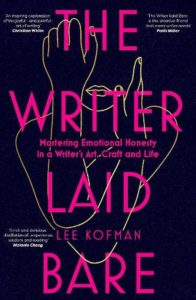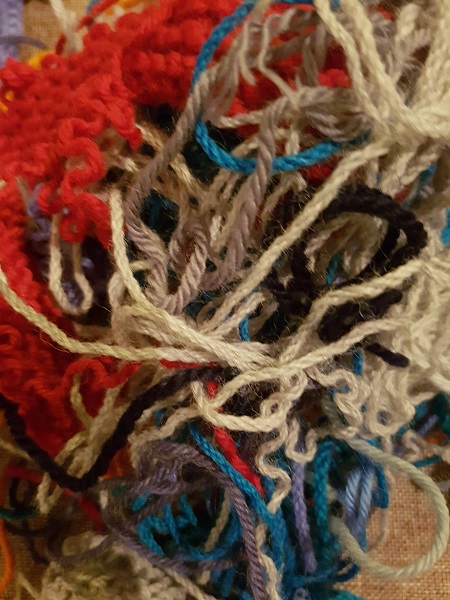In my case, it’s The Writer Laid Low!
You all know the great divide.
Supposedly, on one side, there are the plotters, who use whatever it takes – writing tools like Scrivener, index cards or charts or corkboards – to create a structures, goals, timelines. This way, they can write calmly from A to Z. They never let unruly plotlines tangle, or recalcitrant characters deviate from the plan.
On the other, there are the creative, free-spirited ‘pantsers’. (From ‘seat of the pants’. I seem to have read this first from American writers, and I don’t like the term – maybe I’m a perv, but it sends my mind straight to underwear. Perhaps wingers, from ‘winging it’ is better). These pantsers apparently write and write, starting at the beginning and finishing where they type THE END, believing in the flow of their creativity and expecting all the while that it will all work out.
I’m not sure that it’s quite so neat. I certainly lean more towards the winging it side of things, but I always know my ending. I have key scenes in mind. I may not do the explicit and systematic planning but I do fill notebooks with – well, notes.
When last I posted on this blog, I’d just finished my new children’s book, Candleshine. I was polishing before sending it off to my editor – and feeling pretty damn good about the whole thing. Oh, there were a few issues. Little niggles. Things that didn’t quite make sense. I’m aware of the shortcomings of my more lax approach and I’m the first to admit that I have a history of creating insanely complicated plots. But it hung together. The characters were adorable. The ending was just on the right side of tear-jerking… The editor loved it. Which was so encouraging. We agreed: I just had to fix the niggles and resolve the issues.
A couple of weeks later and I’m dealing with something (knitting analogy ahead) that feels like this:
Each time I repair a dropped stitch (a plot hole, an out-of-character action, something that doesn’t make sense, utter drivel), my fix just creates another problem. I’m torn between unravelling the whole thing and re-knitting, or just chucking it in the bin. How has it come to this? I’ve written ten novels. More, if you add the disgraced manuscripts forever on the naughty seat. Perhaps what I need to do is find some way of combining the two approaches. I need a more reliable way to plan and structure – that’s bleeding obvious. But it will have to be a way that works for me. Which means that – as with my notoriously free-from knitting – I will just have to learn from my mistakes, learn from those who’ve been there before me – and figure it out for myself.
It’s obviously too late now… but I have a renewed interest in books on writing for writers.My son asked me what I wanted for my birthday, and I said ‘books’. I gave him a few suggestions – all books on books and writing – and he gave me the lot.
I wanted Graeme Simsion’s The Novel Project after a good review from Kate Constable, who wrote that she was finding it useful. The blurb promised that if I follow his structured approach, I will be able to “start each writing day with clarity and purpose”. I will find myself “progressing steadily toward the best book…(I’m)…capable of.” Which sounds wonderful. But it’s too late for my current tangled web. I started to read Simsion’s excellent advice…and despaired.
So I have laid it aside to read AFTER I’ve wrangled this book into shape.
 Instead, I read Lee Kofman’s The Writer Laid Bare: Mastering Emotional Honesty in a Writer’s Art, Craft and Life. It’s an honest, wild, sometimes funny and sometimes painful examination of Kofman’s own life and practice. Big, generous, passionate – I wolfed it down like I was eating something hearty and full-flavoured (moussaka, a beef casserole with red wine and garlic). Some of what she writes about living while writing and writing while living is so familiar. It almost made me cry. There’s a relief in knowing I’m not alone in my struggle.
Instead, I read Lee Kofman’s The Writer Laid Bare: Mastering Emotional Honesty in a Writer’s Art, Craft and Life. It’s an honest, wild, sometimes funny and sometimes painful examination of Kofman’s own life and practice. Big, generous, passionate – I wolfed it down like I was eating something hearty and full-flavoured (moussaka, a beef casserole with red wine and garlic). Some of what she writes about living while writing and writing while living is so familiar. It almost made me cry. There’s a relief in knowing I’m not alone in my struggle.
I loved the way Kofman melds memoir and instruction or advice. For me, this is the best way to learn; to start with the personal – the emotional and mental and physical lived experience – and then go on the intellectual.
Kofman insists on the personal. Just look at the words in the subtitle, ‘Emotional Honesty’. In chapter called The Writer’s Body, she describes an unsatisfactory morning at her desk.
It is about the rain in Melbourne when I begin writing: the sky has been deceptively cloudy since the early morning. I say ‘deceptively’ because the sun is still finding its way through the fluffy celestial bedding, smudging this summer day with a sandy haze. The heat in the air reminds me how much of Australia is on fire right now….
Kofman continues to describe her anguish about the fires. And how it’s mixed with domestic concerns – a botched electrical job, dinner, packing for a holiday. She can’t get to the inner stillness she needs in order to write. She perseveres. She tries her strategies. She reads from Helen Garner’s diaries for inspiration. She copies quotes from a book she’s just read into her writing journal… In the end, she gives up and goes for a swim.
…a serenity descends. Words begin forming in my mind of their own accord… The words come and come, fleshy, exerting insistent and pleasurable pressure on me, just like the water as I move through it. Eventually, the pressure grows so powerful I bolt out, dry myself impatiently, sloppily and race back home, to my laptop.
She writes: Sometimes when the mind is recalcitrant, nothing but the body can save us.
(I don’t swim; I walk. When I used to give talks for children, I always showed a picture of our dog, Gus – and introduced him as my best ever writing aid. Walking daily is my unstructured thinking time. Often after a walk, a knotty problem would simply dissolve. It seemed magical. Sleep can be the same.
Over the past six months, a combination of health issues slowed me down. My daily 50 minutes around the gardens shrank to half that, a couple of times a week. Maybe the lack of walking time is showing up in my manuscript. Maybe now that I’m walk-fit again, the niggles and issues will unkink…)
The Writer Laid Bare is full of insights, humour, good advice and honesty. It’s a writer generously showing how she writes, not from some Olympian height but warts (electrician, dinner, climate change, children) and all. Great to devour and then dip back in to. Plus a marvellous selection of quotes from writers scattered through the text – and reading lists at the end.
Lee Kofman The Writer Laid Bare: Mastering Emotional Honesty in a Writer’s Art, Life and Craft Ventura: RRP $32.99
Lee Kofman is a writer. teacher and mentor based in Melbourne.


I must say Kofman’s book sounds wonderful! I definitely lean toward the planner end of the spectrum. The two parts of writing I enjoy the most are the planning stage, and the close editing — the actual first draft stage is always agonising. I guess we all have to find the method that suits us best. But I do enjoy finding out how other people do it.